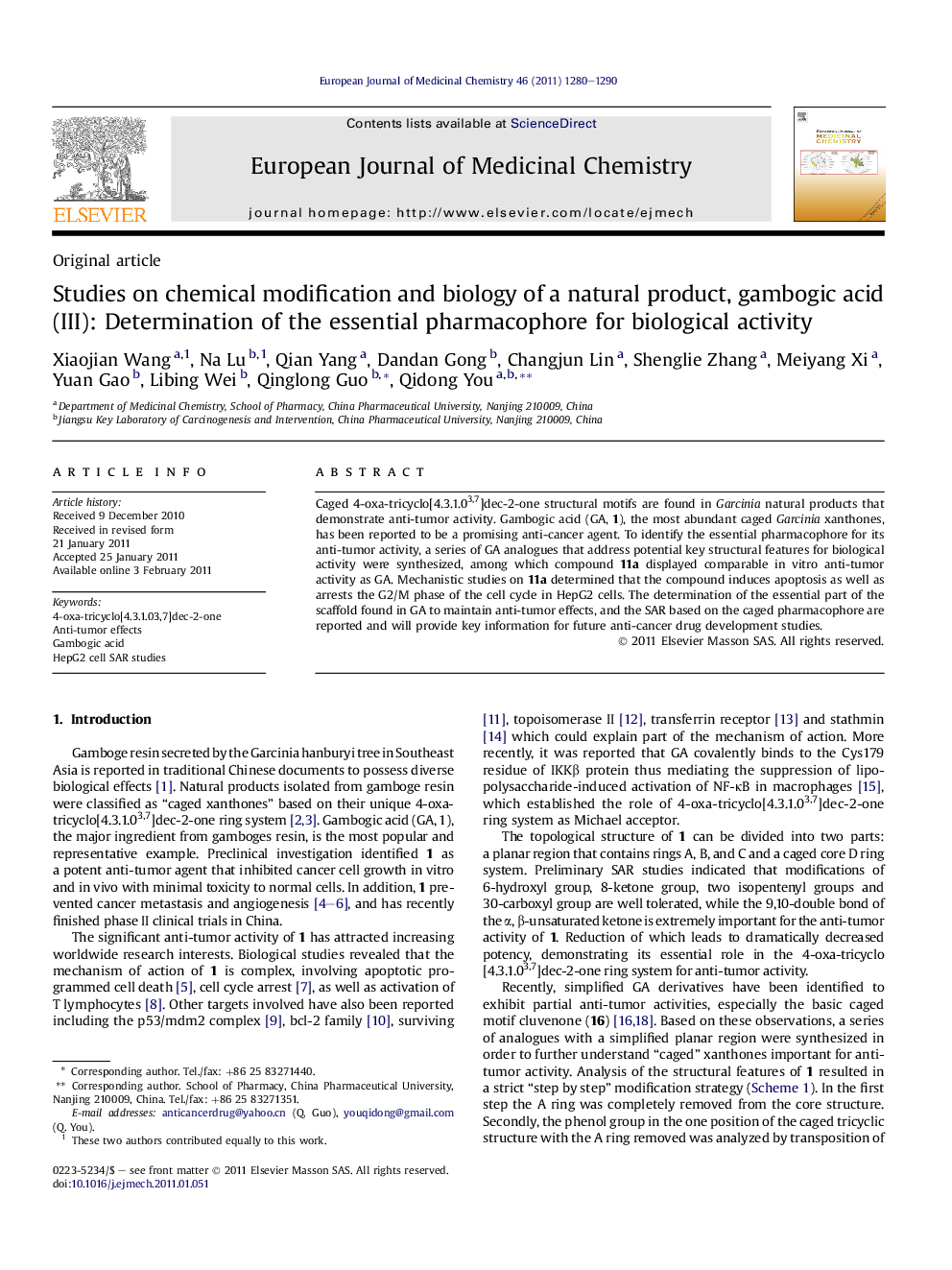| Article ID | Journal | Published Year | Pages | File Type |
|---|---|---|---|---|
| 1397580 | European Journal of Medicinal Chemistry | 2011 | 11 Pages |
Caged 4-oxa-tricyclo[4.3.1.03,7]dec-2-one structural motifs are found in Garcinia natural products that demonstrate anti-tumor activity. Gambogic acid (GA, 1), the most abundant caged Garcinia xanthones, has been reported to be a promising anti-cancer agent. To identify the essential pharmacophore for its anti-tumor activity, a series of GA analogues that address potential key structural features for biological activity were synthesized, among which compound 11a displayed comparable in vitro anti-tumor activity as GA. Mechanistic studies on 11a determined that the compound induces apoptosis as well as arrests the G2/M phase of the cell cycle in HepG2 cells. The determination of the essential part of the scaffold found in GA to maintain anti-tumor effects, and the SAR based on the caged pharmacophore are reported and will provide key information for future anti-cancer drug development studies.
Graphical abstractA series of gambogic acid analogues that address potential key structural features for biological activity were synthesized to identify the essential pharmacophore for their anti-tumor activities.Figure optionsDownload full-size imageDownload as PowerPoint slideResearch highlights► A series of simplified GA derivatives were designed and synthesized. ► The xanthone-based compounds displayed in vitro anti-tumor effects. ► Hydroxyl group on C1 position is essential for optimal anti-tumor activity. ► Compound 11a was able to induce cell apoptosis and arrest cell cycle growth in the G2/M phase.
